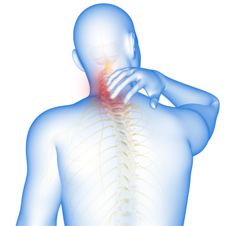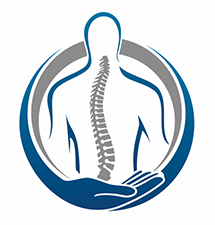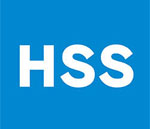Cervical Spondylosis

Spondylosis is a condition where the bones that make up the spine (vertebrae) degenerate. Typically, this degeneration forms bony projections (bone spurs) and reduces the height of the spongy discs between the vertebrae.
Spondylosis is often called spinal osteoarthritis. It can affect the neck (cervical spine), upper, mid and lower back (thoracic spine and lumbar spine). The most common area affected is that of the lumbar spine and cervical spine.
Causes
The causes of spondylosis are:
- Age, which leads to wear and tear of spinal ligaments and bones
- Weakened and degenerated intervertebral discs
- Spinal cord injury
- Genetic predisposition
Signs and Symptoms
The signs and symptoms of spondylosis include:
- Back and neck pain due to nerve compression
- Inflammation
- Numbness and tingling of arms and legs
- Muscle spasms
- Sciatica (low back pain extending down the leg)
Sometimes, you may have spondylosis, but not show any symptoms.
Diagnosis
Your doctor will diagnose spondylosis after reviewing your medical history and performing a physical examination.
Additional diagnostic tests for spondylosis may be ordered, including Radiology tests such as:
- X-rays
- Magnetic resonance imaging (MRI)
- Computerized tomography (CT) scans
- Myelogram
- Electromyogram and nerve conduction study to measure electrical activity of the nerve
Treatment
Treatment of spondylosis depends on the severity of symptoms.
Conservative therapy may include:
- Medications: Your doctor may prescribe anti-inflammatory medications, and analgesics (pain medications), muscle relaxants, anti-depressants and topical applications for relieving your neck and back pain.
- Self-care: You can use heat and/or ice therapy to lessen the pain. You can also use special cervical pillows to relieve neck pain while sleeping.
- Exercises: Your therapist will teach you exercises to strengthen your back and stomach muscles. Regular walking and yoga will also help in relieving chronic back pain.
- Adjunctive therapies: Acupuncture, which involves the insertion of very thin needles into the body, may be beneficial for back pain.
- Chiropractic spinal manipulations can also be suggested to correct the spinal alignment and improve your body’s function.
- Your doctor may suggest minimally invasive procedures such as steroid injection and radiofrequency denervation.
Steroids may be injected into facet joints (joints between adjacent vertebrae), epidural space (space around the spinal cord), or intervertebral disc spaces, to reduce acute pain and pain radiating into a limb.
- Your doctor may also perform radiofrequency denervation technique, in which the nerves causing pain are detected and treated, to stop the transfer of pain messages.
Surgery
Your doctor will suggest surgery if conservative treatment does not relieve pain from spondylosis. Spinal decompression surgery is a general term used for various procedures that are performed to relieve pressure on your nerves caused by compression. These include the following procedures:
- Laminectomy removes the bony arches over the spinal cord to decrease the pressure on the spinal nerves.
- Discectomy removes part of the intervertebral disc that is applying pressure on the nerve.
- Foraminotomy enlarges the openings from which nerve roots emerge.
- Osteophyte removal removes bony projections such as bone spurs which cause pinched nerves.
- Corpectomy removes a vertebral body and its disc
Your surgeon may combine vertebral fusion with any of these surgical procedures in order to stabilize the spine.







